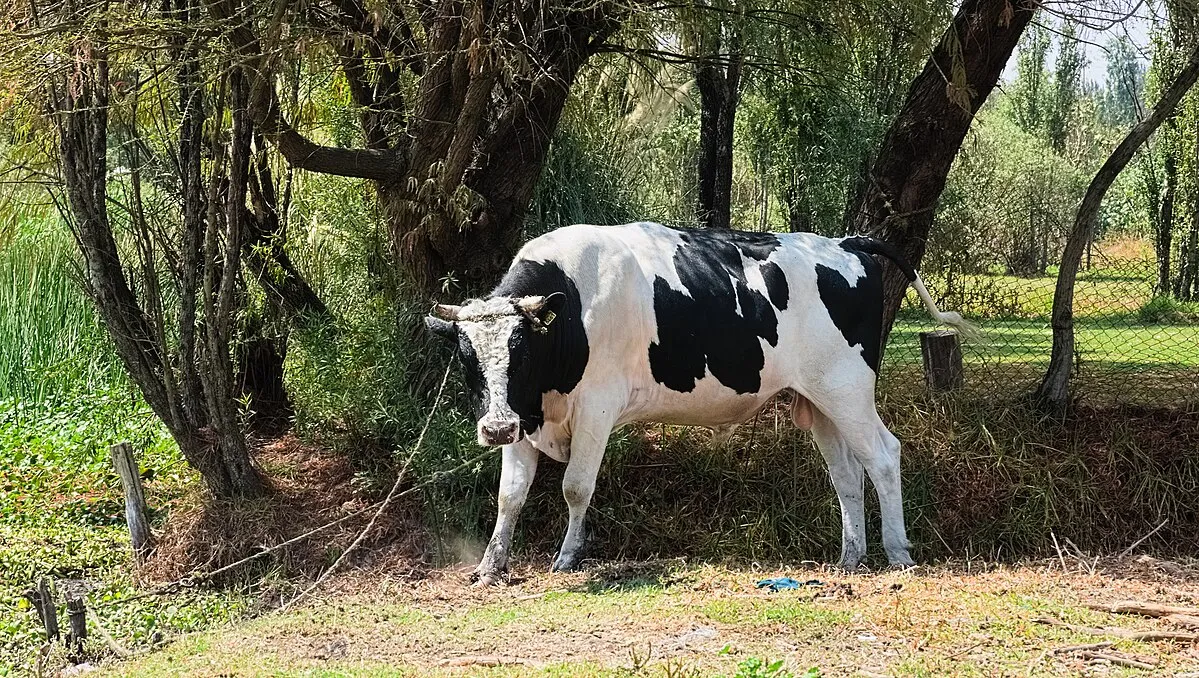Cattle Deaths Mount as Bird Flu Spreads

Image credit: Cvmontuy, CC BY-SA 4.0
Avian flu has struck dairy cows in five U.S. states, causing significant deaths and culling due to failed recoveries, state officials and academics reported to Reuters. The outbreak, affecting more than 80 herds across 10 states since late March, poses a greater economic threat than previously anticipated. Unlike poultry, the higher cost of raising cows amplifies the financial impact on farmers.
A U.S. Department of Agriculture spokesperson noted that while most cows recover well, a few deaths have been acknowledged. However, the total number of affected cows in South Dakota, Michigan, Texas, Ohio, and Colorado remains unclear. Secondary infections, exacerbated by weakened immune systems due to avian flu, have been a primary cause of death, according to state veterinarians and agriculture officials. Reduced milk production, digestive issues, fever, and diminished appetite have plagued infected cattle.
Health Risk to Humans
While the surging cases among cattle and other mammals is drawing attention, the first human death from the H5N2 virus occurred just last week, leading to worries that an easily spreadable strain may pose a serious public health risk. Some experts are advising now may be the time to stock up on critical supplies for your home before an outbreak occurs in your local community.
According to Reuters, a South Dakota dairy farm with 1,700 cows culled 24 animals due to poor recovery and secondary infections, according to Russ Daly from South Dakota State University. In Michigan, a farm eliminated about 20 of its 200 infected cows, with the state having the highest confirmed infections. Colorado dairies also reported culling due to non-recovery, and similar situations were noted in Ohio and Texas. New Mexico saw early culling due to reduced milk production before confirming avian flu in cattle. As awareness grew, culling decreased as most cows gradually recovered. Officials from North Carolina and Kansas reported minimal cow deaths, and Idaho did not respond to information requests. Bird flu particles were detected in a beef sample from a slaughtered cow, but the meat did not enter the food supply. USDA tests found no evidence of avian flu particles in ground beef samples procured from grocery stores.
The outbreak in dairy cows highlights the broader risks posed by avian flu. According to an article which appeared in The Atlantic this week, the H5N1 avian flu strain, which has been widely transmitting among animals, could become a severe pandemic if it gains the ability to spread among humans. The world has faced multiple flu pandemics, and while preparedness has improved, significant challenges remain.
The 2009 H1N1 swine flu pandemic serves as a reminder of the unpredictable nature of flu viruses and the importance of readiness. During the H1N1 pandemic, roughly 200,000 to 300,000 people died worldwide. Though H5N1 has not yet spread widely among humans, its potential impact remains a concern for public health experts. Factors such as limited immunity in the population and the potential for the virus to undergo evolutionary changes make vigilance crucial.
Due to these developments, the bird flu outbreak in U.S. dairy cows not only raises immediate economic concerns but also underscores the importance of global preparedness for potential future pandemics. The lessons from past flu pandemics highlight the need for continued vigilance and coordinated efforts to mitigate risks.
